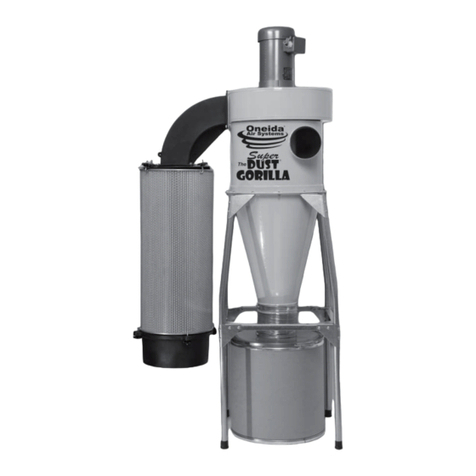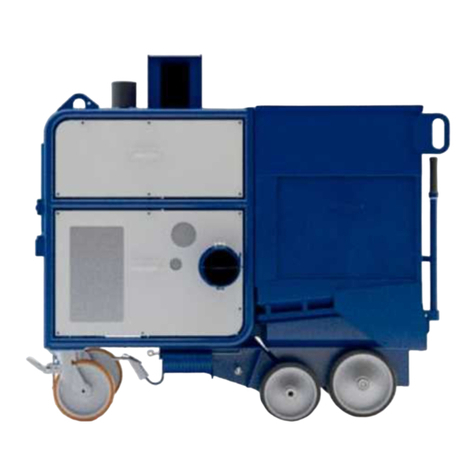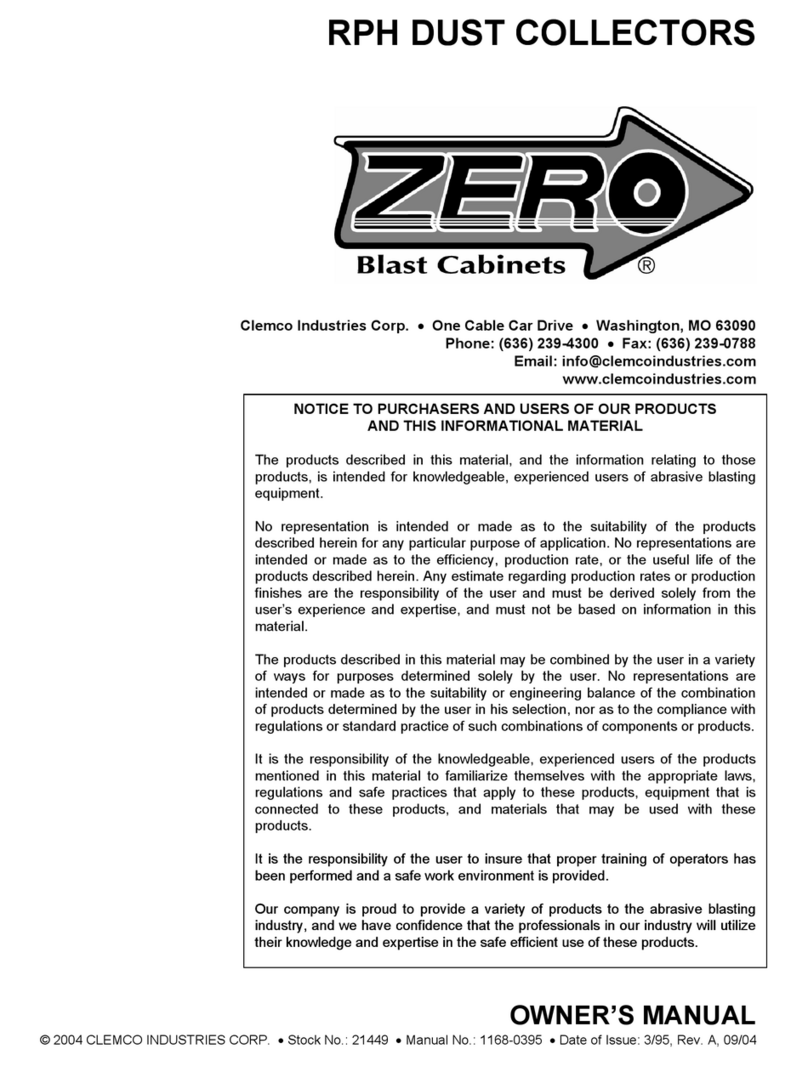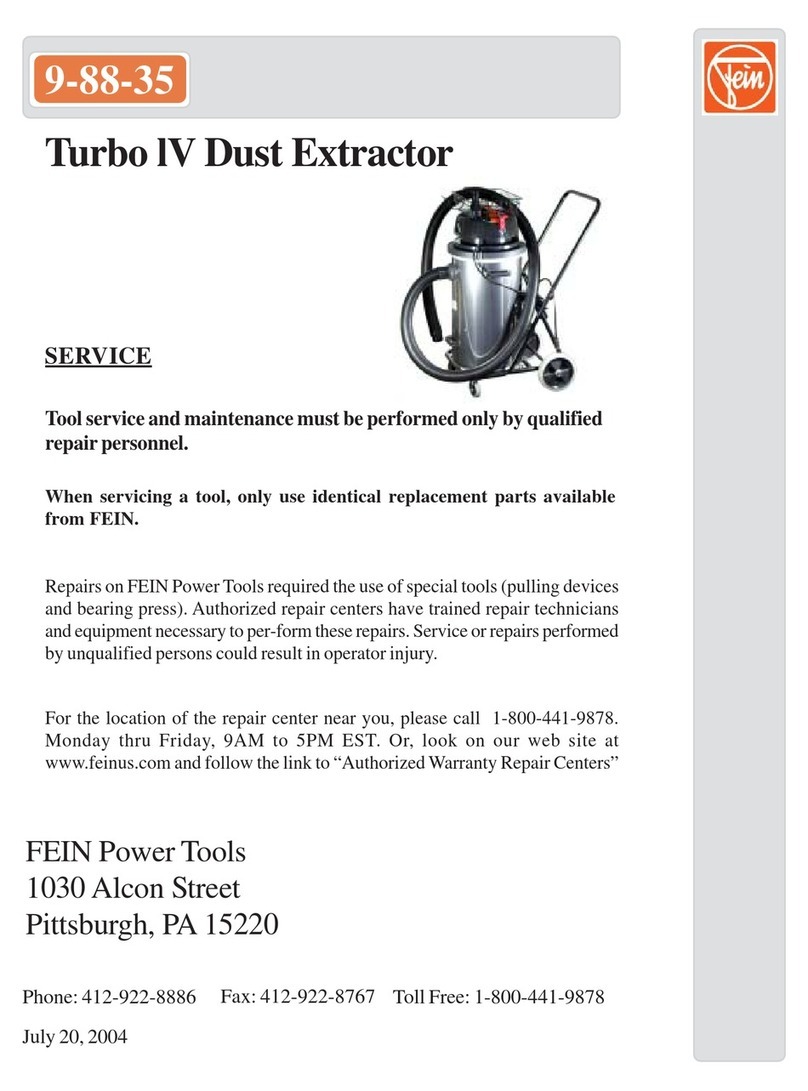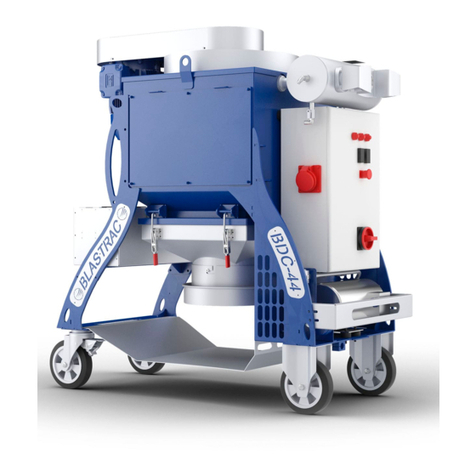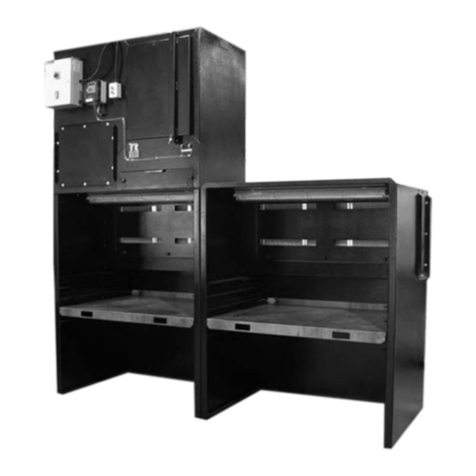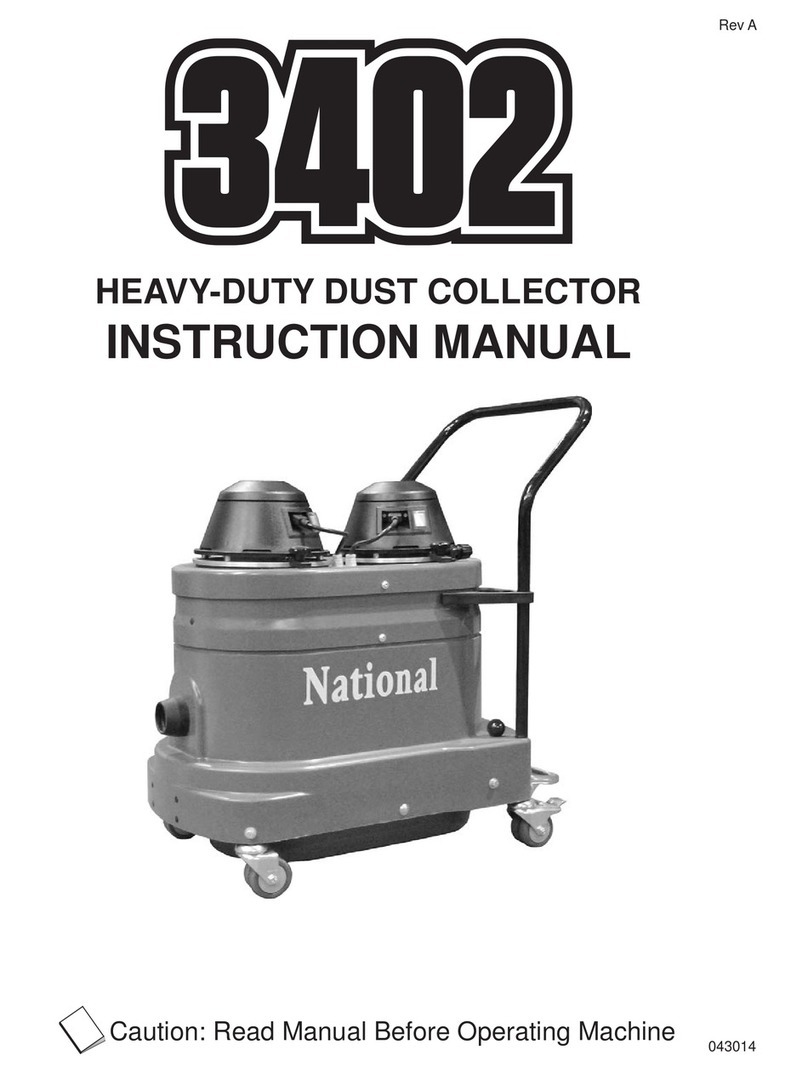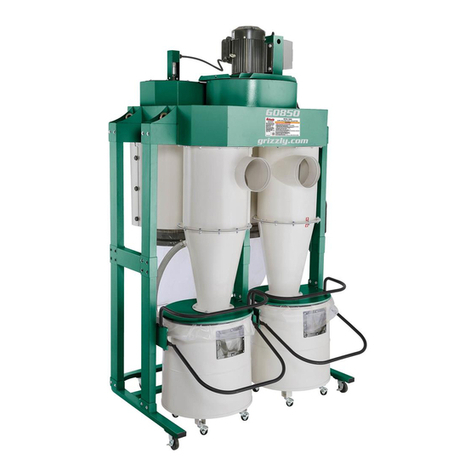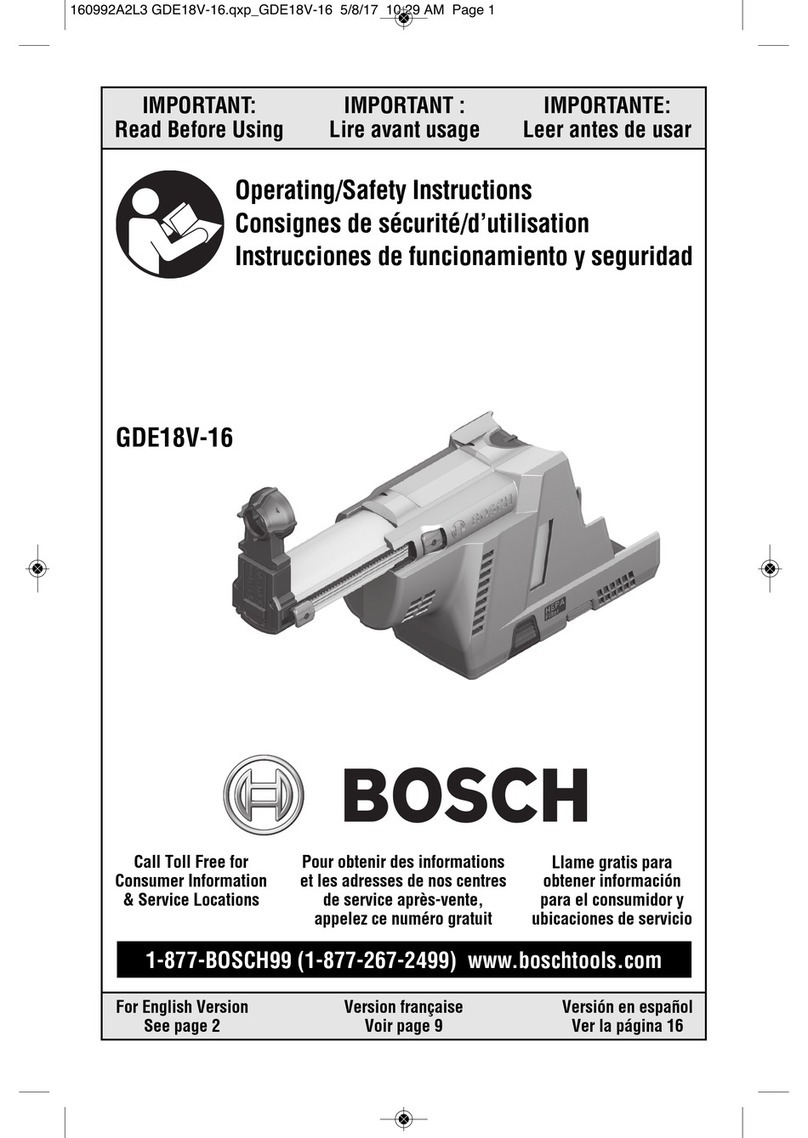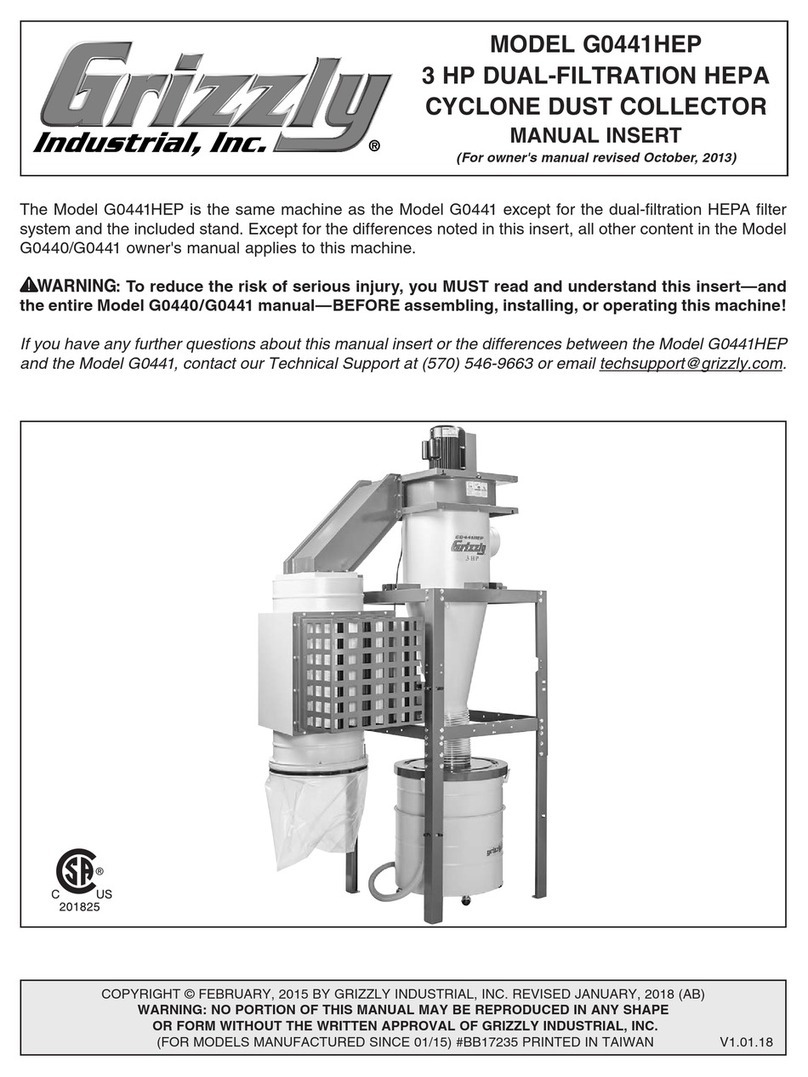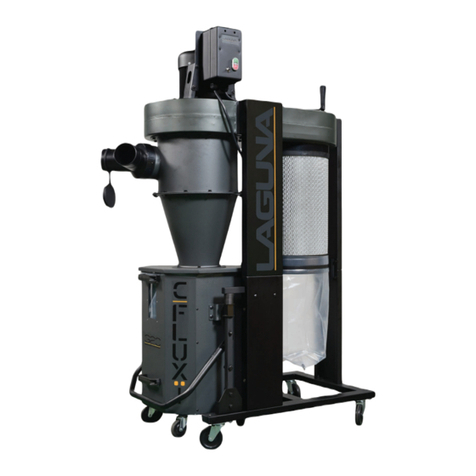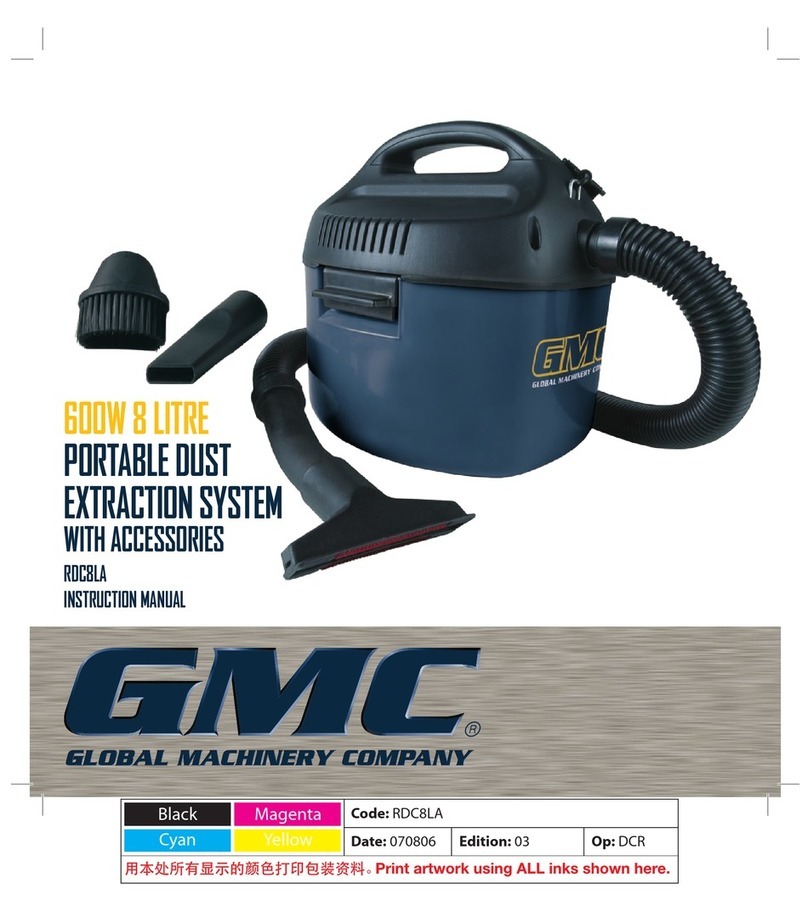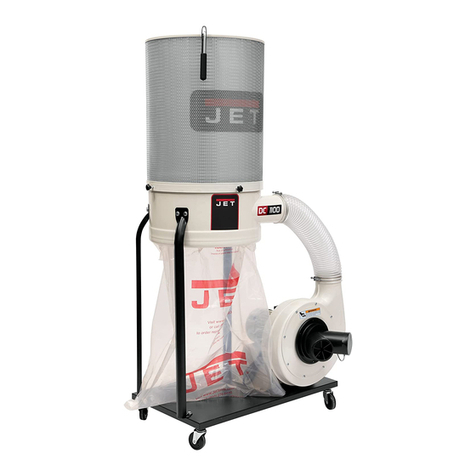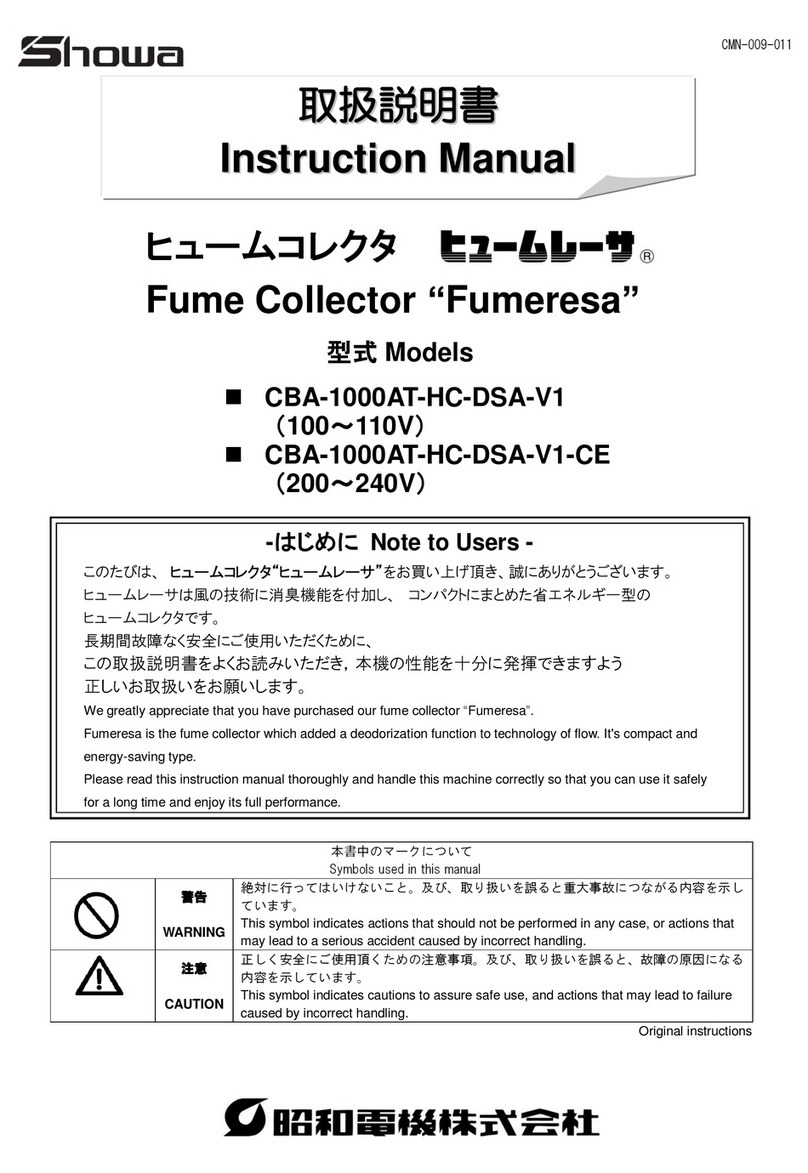
CDF MODULAR DUST COLLECTOR Page 4
© 2017 CLEMCO INDUSTRIES CORP. www.clemcoindustries.com Manual No. 23478 Rev D
2.2 Individual Module Assembly
2.2.1 The modules require field erection of the
structural legs and brace assembly, assembly of the
hopper and body, plus accessories such as ladder,
handrail, exhauster and ducting, and explosion vents.
2.2.2 Erect the collector modules as shown in the
assembly drawings provided. Pay special attention to the
orientation of the inlet and outlet duct openings, access
doors, ladder, handrail, and exhauster location. The
module with the pressure regulator on the pulse manifold
is an end module; refer to the assembly drawing for its
positioning. If the collector is part of a blast room or
automated cabinet, use the general arrangement
drawings for the placement of the components.
2.3 Connecting Modules Together
2.3.1 All fasteners to bolt modules together are
accessible from the outside except for the bolts on the
inside of the exhaust plenum (between the plenum and
cartridge chamber).
2.3.2 Check the assembly drawings for the sealing
material (mastic, weather-strip gasket, caulking, etc.),
and make sure the correct sealing material is in place
before bolting the modules together.
2.3.3 Connect side panels to the end modules using
the seal and fasteners shown on the assembly drawings.
2.4 Anchors
WARNING
All anchors must be calculated and specified by
a qualified engineer. Inadequate anchoring to
the footing could result in hazardous shifting of
the collector and ducting, which could result in
death or serious injury.
2.4.1 Recheck orientation of the dust collector, blast
room and recovery equipment, or other equipment the
collector is ventilating. When satisfied that all are
correctly positioned, anchor modules to the floor with
anchors specified by a qualified engineer. NOTE: If
there is any doubt about the final positioning of the
dust collector, do not remove the lifting equipment
until the collector is fully assembled, connected to
the mating equipment, and ready to be anchored.
2.4.2 After the collector is firmly anchored, remove the
lifting rigging.
2.5 Exhauster Assembly
NOTE: The exhauster is usually floor mounted, and
requires ducting from the collector, and an exhaust stack
with a damper adjustable from 0-80% closed. Some small,
single module collectors may have the exhauster mounted
on the collector body, and do not require additional
ducting.
2.5.1 Anchor the exhauster into position. NOTE:
Positioning of the exhauster must coincide with the
placement of the outlet ducting. Use a temporary anchor
until the ducting is in place.
2.5.2 Attach exhaust stack and damper assembly to
the exhauster outlet.
2.6 Ducting
2.6.1 Clemco Industries Corp. does not usually supply
inlet or exhaust ducting, but does provide a general
arrangement drawing for suggested ducting. The top or
bottom exhaust ducting plate, and inlet ducting plate
may serve as a mounting flange, by cutting an opening
and welding the ducting to the plate.
2.6.2 All ductwork must be designed and installed by
qualified licensed contractors familiar with industrial
ventilation practices, and must conform to applicable
codes. Where state or local codes conflict with one
another or with specifications by Clemco Industries
Corp., the more stringent regulation shall be followed.
NOTICE
All ducts, joints, and connections must be tight.
Any leaks will affect the overall performance of
the system.
NOTICE
Ducting must be supported sufficiently to place
no load on connecting equipment.
2.6.3 Exhaust Ducting. Figure 2
NOTICE
The joint between the duct and exhauster
housing must be flexible, such as canvas or
rubber with band clamps. The ducting must be
self-supporting. NO LOAD IS TO BE APPLIED
TO THE EXHAUSTER BY THE DUCTING.


